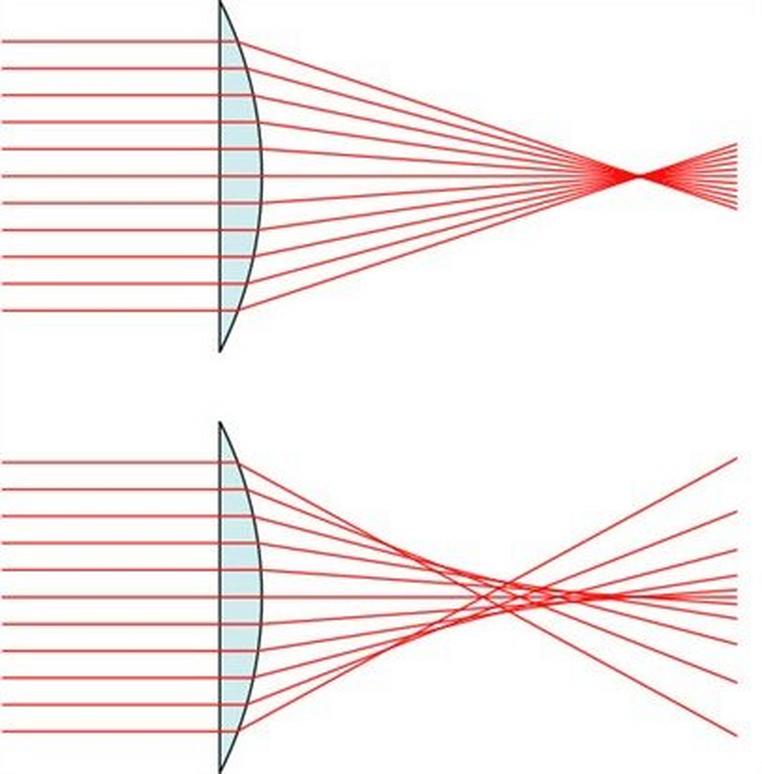Spherical aberration - Binoculars
In a perfect lens, parallel rays of light would be brought to a single point at the focus. But just as there is a distortion for various colours in the focal point in chromatic aberration , there is also a difference for beams of light that enter through the lens close to the optical axis or in fact further away from it. If spherical aberration is not corrected properly, a blurred, fuzzy image will be rendered.
In the illustration above, the first example shows how the equally-spaced or parallel rays of light are brought to a single point at the focus. The second example shows how this occurs in reality: the rays furthest away from the optical axis have a different focal point from the rays closer to the optical axis.
An easy way to camouflage spherical aberration is to simply use a diaphragm to block the outer rays. Obviously, this leads to a lot of light being lost. Although this is not the ideal solution, it is often the one adopted in cheaper binoculars.
In high-quality binoculars, carefully selected components, including aspheric lenses, are often being used nowadays to correct spherical aberration as effectively as possible.







